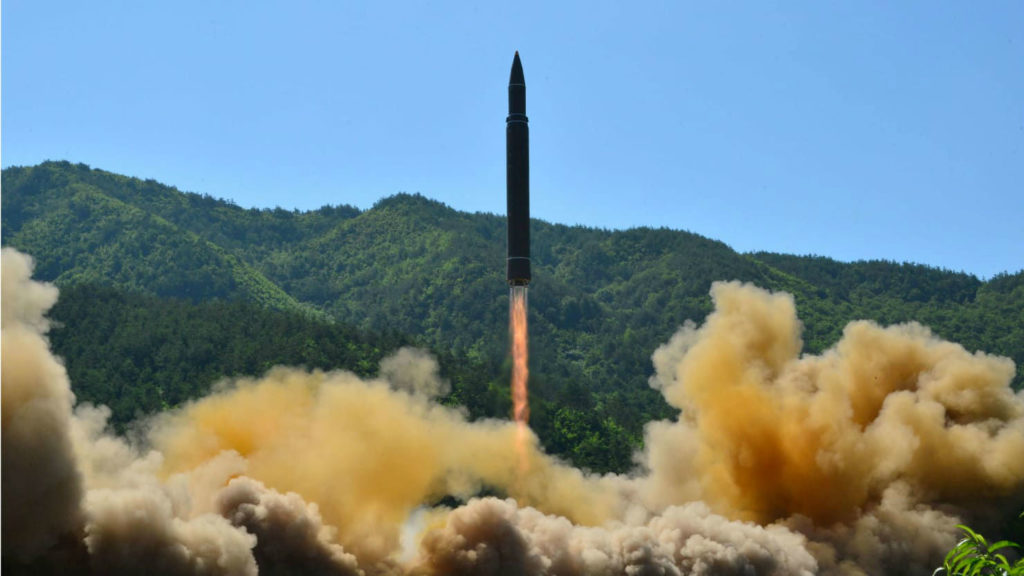North Korea recently tested its latest intercontinental ballistic missile (IBM) – Hwasong-18.
About Hwasong-18:
- Hwasong-18 is a three stage solid-fuelled intercontinental ballistic missile (IBM) developed by North Korea.
- It is North Korea’s first ICBM to use solid fuels which allows for faster launch.
- It was first unveiled in the February 2023 parade commemorating the 75th anniversary of the founding of the Korean People’s Army.
- The Hwasong-18’s 74 minutes flight time was the longest ever for a North Korean missile test.
- Hwasong-18 allows faster development of missiles during a year.
- It has the potential to greatly enhance the effectiveness of their nuclear retaliatory posture and influence their offensive military strategy.
- Solid-fueled ICBMs such as the Hwasong-18 can be prepared for launch more quickly than their liquid-fueled counterparts as they do not require time-consuming fueling procedures.
Solid-fueled Missiles:
Soild-fueled missiles used a solid propellant composed of fuel and oxidizer that is tightly packed into the rocket’s motor. This mixture is stable and can be stored for long periods without significant degradation. Solid-fueled ICBMs have shorter launch preparation times because the propellant is already inside the missile, making them more responsive to sudden launch orders. They are typically more mobile as they can be easily transported on vehicles without the need of additional fueling equipment.
Intercontinental Ballistic Missiles (ICBM):
An intercontinental ballistic missile (ICBM) is a ballistic missile with a range greater than 5,500 km primarily designed for nuclear weapons delivery. They differ from other forms of ballistic missile by their much greater range and payload capacity.
The first ICBMs were developed by the Soviet Union in 1958; the United States followed the next year and China some 20 years later.
Three stage ICBM
A three stage ICBM is a type of ICBM that has three stages which are used to propel the missile to its target.
- The first stage is the boost stage which is responsible for lifting the missile off the ground and accelerating it to a high velocity.
- The Second stage guides the missile towards its target, using a combination of internal guidance systems and external tracking systems.
- The Final stage is the terminal stage which is responsible for ensuring that the missile reaches the target with precision.




 Weekly One Liners 15th to 21st of Decemb...
Weekly One Liners 15th to 21st of Decemb...
 World Basketball Day 2025 Celebrates Bas...
World Basketball Day 2025 Celebrates Bas...
 UN Celebrates Second World Meditation Da...
UN Celebrates Second World Meditation Da...







